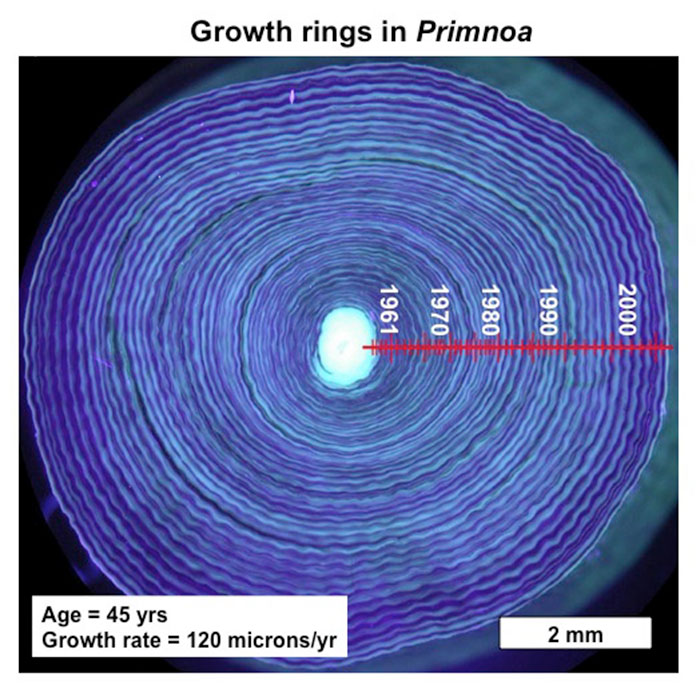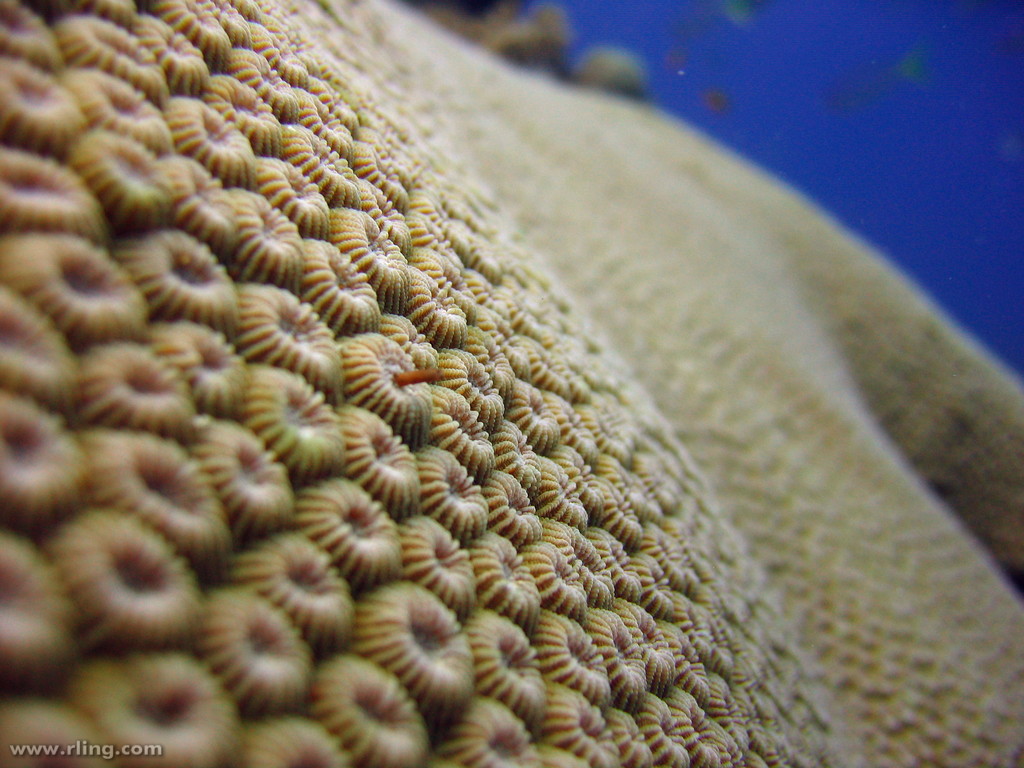Did you know that the moon was once much closer to the Earth than it is now, and that this allowed it to exert a stronger gravitational pull on the Earth making it spin faster, thus resulting in shorter days? (1/7)
Curiously, the hard evidence that proves this lies in the coral fossils! Corals have been around in the oceans since about 400 million years ago. Each coral in a colony, adds a thin layer of calcium carbonate every day as it grows, without fail. (2/7)
This forms a visible ring marking each day of the year, and each year of its growth is sealed within a distinct band. (3/7)
A cross section of a present day coral will reveal clear bands depicting the number of years, and each band comprising 365 growth rings, which tells us the age of the coral, much like tree rings do. (4/7)
 https://abs.twimg.com/emoji/v2/... draggable="false" alt="📷" title="Kamera" aria-label="Emoji: Kamera">: Richard Ling/Flickr
https://abs.twimg.com/emoji/v2/... draggable="false" alt="📷" title="Kamera" aria-label="Emoji: Kamera">: Richard Ling/Flickr
Astrophysicists, upon observing cross sections of some of the coral fossils from 380 million years ago, counted 410 growth rings within every distinct band. Upon doing the math, it can be concluded that each day was 21 hours long back then. (5/7)
Extrapolating this information with other scientific observations and calculations, we know now that going further back, nearly 3.5 billion years, on a relatively young Earth, the days were just about 6 hours long! (6/7)
This was because the recently formed moon was only 64,000 km. away from Earth. Today, the moon sits about 350,600 km. from Earth. Sun’s gravitational pull, even today, continues to pull the moon further away from our planet, at the rate of nearly 3.6 cm. per year! (7/7)

 Read on Twitter
Read on Twitter
 : Richard Ling/Flickr" title="A cross section of a present day coral will reveal clear bands depicting the number of years, and each band comprising 365 growth rings, which tells us the age of the coral, much like tree rings do. (4/7)https://abs.twimg.com/emoji/v2/... draggable="false" alt="📷" title="Kamera" aria-label="Emoji: Kamera">: Richard Ling/Flickr" class="img-responsive" style="max-width:100%;"/>
: Richard Ling/Flickr" title="A cross section of a present day coral will reveal clear bands depicting the number of years, and each band comprising 365 growth rings, which tells us the age of the coral, much like tree rings do. (4/7)https://abs.twimg.com/emoji/v2/... draggable="false" alt="📷" title="Kamera" aria-label="Emoji: Kamera">: Richard Ling/Flickr" class="img-responsive" style="max-width:100%;"/>


